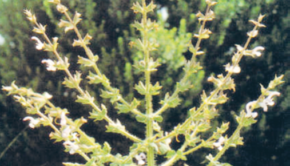Organic Torah of Purim
At the still point of the turning world. Neither flesh nor fleshless;
Neither from nor towards; at the still point, there the dance is,
But neither arrest nor movement. And do not call it fixity,
Where past and future are gathered. Neither movement from nor towards,
Neither ascent nor decline. Except for the point, the still point,
There would be no dance, and there is only the dance.
–TS Eliot, Burnt Norton
What is “organic” about Purim? Let me give an example. Last week my family was visiting California and we went to see the giant redwoods in Muir Woods. As I gazed up at the trees I found myself in the presence of majesty, of some inspiring presence in the life of these amazing living beings. My senses were fully engaged by the sights, sounds and smells of the forest. Yet the full experience drew me into a place deep within, beyond the external world of my senses.
The Organic Torah of Purim is about playing with the outer and the inner: is about using the outer appearances to get to the inner core. Outer appearances matter. Esther is indeed a beauty, and she uses her appearance to get where she needs to be; Mordecai refuses to bow down to Haman, even though that is merely an outward sign. But these outer appearances are only the surface. They can either lead us to an inner core reality, or they can remain external, and hide that inner core.
In what I consider the center, the turning point of the megillah, Esther makes the decision to go into the inner court of the king to plead the case of her people. She uses her external garb and her position as queen, but she also must find her inner resources. Something of that inner core shines through her, and she finds favor in the king’s eyes.
In that moment, Esther is the High Priest, the Kohen Gadol, when he goes into the Holy of Holies on Yom Kippur (this parallel isn’t my invention. It is alluded to in the Tikunei Zohar 57b). She wears her royal garments and enters into a mysterious Center, a place where the normal rules don’t apply, only a mysterious kind of inner grace. Like the Kohen Gadol, she is risking her life, not for her own ego, but for the sake of the whole people.
This is the turning point of the Megilla because the entire spiritual battle between Amalek and the Jews is about that place where the outer categories do not apply. We wear masks and imbibe until the point where we “do not know the difference between cursed is Haman and blessed is Mordechai,” because we need to reach the place where our normal categories are confused, questioned, undermined.
Then we reach a point where we either go in the direction of Amalek, saying it is all chaos and nothingness, or we make the choice of Esther and the High Priest, saying that beyond the rules, in the sacred center, all is Oneness and unity. That is the inner choice of Purim.
This battle between Amalek and Israel is hinted at back in their first encounter right before the giving of the Torah. In the desert the Israelites had reached a place of radical doubt. They had come to say, “Is God in our midst or not.” (Exodus 17:7) and the next verse says, “And then came Amalek.” In the desert, they reached a place without sign posts, a clean slate. That is what the desert is, a place to start anew. But in that desert the people need to pass through Doubt (in Hebrew, safek with the gematria of 240 = Amalek), and confusion and battle with it. It is only after coming to a place of emptiness, battling with doubt that the Israelites can reach Sinai and receive the Torah.
On Purim, we all need to go into that inner place. We don’t deny the external, but we play with it. We wear masks, we eat and drink, we use the whole world of externals – but we are showing ourselves that all of these things are not the ultimate truth, they point to something deeper.
We tend to think in terms of either/or, good or bad, Us versus Them. In the modern world, that either/or gets us into trouble. But in the organic world everything is nested in interlocking levels: cells within organs, organs within bodies. As in the beautiful fractals of the Mandelbrot equations, reality is a pattern of patterns, leading to the One/the Nothing, the Ain Sof, which is the center, but no-thing.
We cannot think our way in. We need to stop making sense, and jump in like Esther, knowing that beyond the rules and categories there is a Sacred place of Oneness or Doubt. Choosing Oneness, we renew the world.
Good Purim!





One Response to Organic Torah of Purim